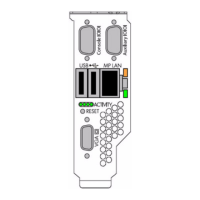Table 14 Memory Load Order
1 CPU system (socket 0)2 CPU system (socket 0 and 1)
Pair number
Memory slotsRiserMemory slotsRiser
3A and 4ARiser 13A and 4ARiser 11
3A and 4ARiser 23A and 4ARiser 32
1B and 6BRiser 13A and 4ARiser 23
1B and 6BRiser 23A and 4ARiser 44
2C and 5CRiser 11B and 6BRiser 15
2C and 5CRiser 21B and 6BRiser 36
——1B and 6BRiser 27
——1B and 6BRiser 48
——2C and 5CRiser 19
——2C and 5CRiser 310
——2C and 5CRiser 211
——2C and 5CRiser 412
TIP: Loading DIMM pairs on a single riser at a time is also supported, but this reduces system
performance.
Supported DIMM sizes
DIMMs seat onto the four memory riser boards, which seat on the system board. The minimum
server configuration requires at least one memory pair (group of two DIMMs) installed on memory
riser board 1.
Supported DIMM sizes:
• 2 GB
• 4 GB
• 8 GB (future release)
• 16 GB (future release)
Memory loading rules and guidelines
CAUTION: Failure to observe the following cautions results in system degradation or failure:
• Only ECC DIMMs are supported.
• Load DIMM pairs from largest to smallest capacity. For example, if you have a pair of 4 GB
DIMMs and a pair of 2 GB DIMMs, install the pair of 4 GB DIMMs first.
NOTE: Faster DIMMs and slower DIMMs can be installed on different slots within the same
channel, but faster DIMMs will operat at timing of slowest DIMM populated.
• Alternate loading between installed CPUs. Do not install DIMMs if the corresponding CPU is
not installed.
• Spread DIMMs evenly between CPUs.
• Load DIMMs in pairs by increasing letter.
Installing additional components 35

